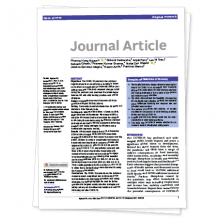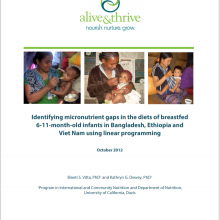Journal article
Apr 22 2021

Old Tricks, New Opportunities: How Companies Violate the International Code of Marketing of Breast-Milk Substitutes and Undermine Maternal and Child Health during the COVID-19 Pandemic (Ching, C., 2021. Int'l Journal of Environmental Research and Pub Hth)
An analysis reveals that breastmilk substitutes companies are using health claims, misinformation about breastfeeding, digital marketing, and promotional tactics such as donations and services to capitalize on families’ COVID-19 fears to undermine breastfeeding and sell products.
Journal article
Dec 08 2020

Mistakes from the HIV pandemic should inform the COVID-19 response for maternal and newborn care (Gribble, K., 2020. International Breastfeeding Journal)
During the COVID-19 pandemic, policy makers and practitioners must learn from mistakes made during the HIV pandemic, when breastfeeding was undermined through isolating infants from their mothers, and formula feeding resulted in more infant deaths than the disease.
Journal article
Feb 25 2020

The cost of not breastfeeding: global results from a new tool (Walters, D., 2019. Health Policy and Planning)
A billion dollars and two thousand lives, every day. This impactful study, which is the foundation for Alive and Thrive’s online tool, examines the human and economic costs of not breastfeeding.
Journal article
Nov 15 2019

Translating the International Code of Marketing of Breast-milk Substitutes into national measures in nine countries (Michaud-Letourneau, I., 2018. Maternal & Child Nutrition)
This paper investigates how the International Code of Marketing of Breast-milk Substitutes (the Code) was translated from an international policy framework to protect breastfeeding against inappropriate marketing practices into national level legislation, in the context of the advocacy efforts un
Journal article
Feb 15 2019

The effect of the Alive & Thrive initiative on exclusive breastfeeding in rural Burkina Faso: a repeated cross-sectional cluster randomised controlled trial (Cresswell J., 2019. Lancet Global Health)
The benefits of exclusive breastfeeding on mortality, health, and development of children have been well documented.
Report
Nov 07 2014

Identifying Micronutrient Gaps in the Diets of Breastfed 6-11-month-old Infants
Presents the methodology and results of using linear programming to determine whether micronutrient needs could be met using only unfortified local foods in three countries, explores options for meeting these needs that includes fortified products, and compares the costs of the various scenarios.

